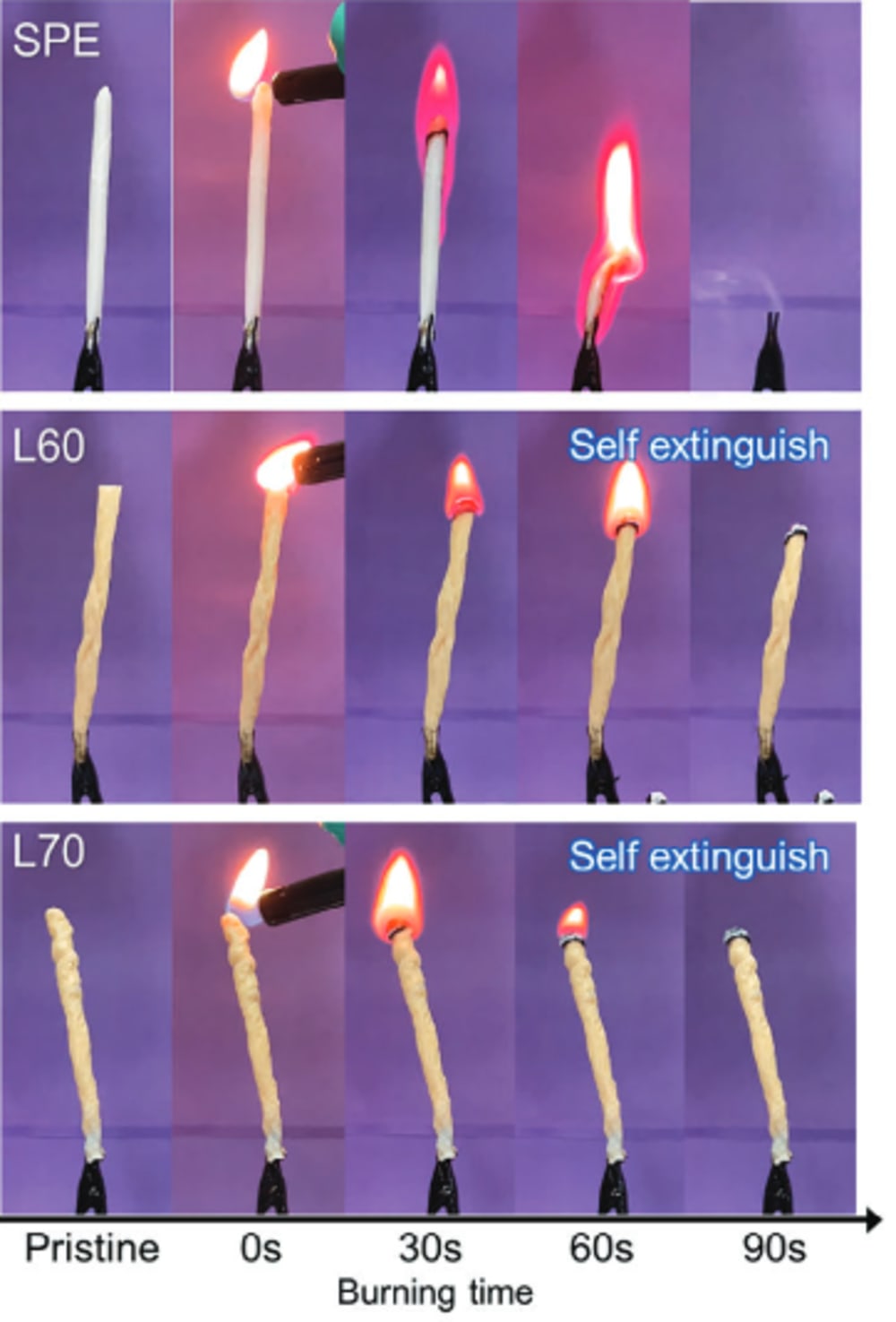Conventional solid polymer electrolytes used in lithium-ion batteries often perform poorly due to structural limitations, particularly poor contact with electrodes, and they fail to prevent the growth of lithium dendrites—needle-like structures that form during charging cycles and can cause short circuits, fires, or explosions.
To address these issues, the research team developed a triple-layer solid electrolyte with each layer serving a distinct purpose. The middle layer provides mechanical strength, while the soft outer layers ensure better contact with electrodes and promote smooth lithium-ion transport.
The electrolyte incorporates decabromodiphenyl ethane (DBDPE) for fire resistance, zeolite to enhance structural integrity, and a high concentration of lithium salt (LiTFSI) to improve ionic conductivity. This design not only prevents dendrite formation but also boosts battery safety and performance.
In tests, the newly developed lithium-ion battery maintained 87.9% of its capacity after 1,000 charge-discharge cycles—significantly higher than the 70–80% typically seen in conventional batteries. It also demonstrated self-extinguishing behavior in fire scenarios, greatly reducing the risk of combustion.
This advanced battery design is expected to be applicable in a wide range of devices, from smartphones and wearables to electric vehicles and large-scale energy storage systems. This is really amazing new solid state electrolytes for non-flammable lithium ion batteries. If commercialized, this technology could provide a groundbreaking solution that eliminates fire hazards in electric vehicles.
Like this entry?
-
About the Entrant
- Name:Jae Hyun Kim
- Type of entry:individual
- Patent status:none








